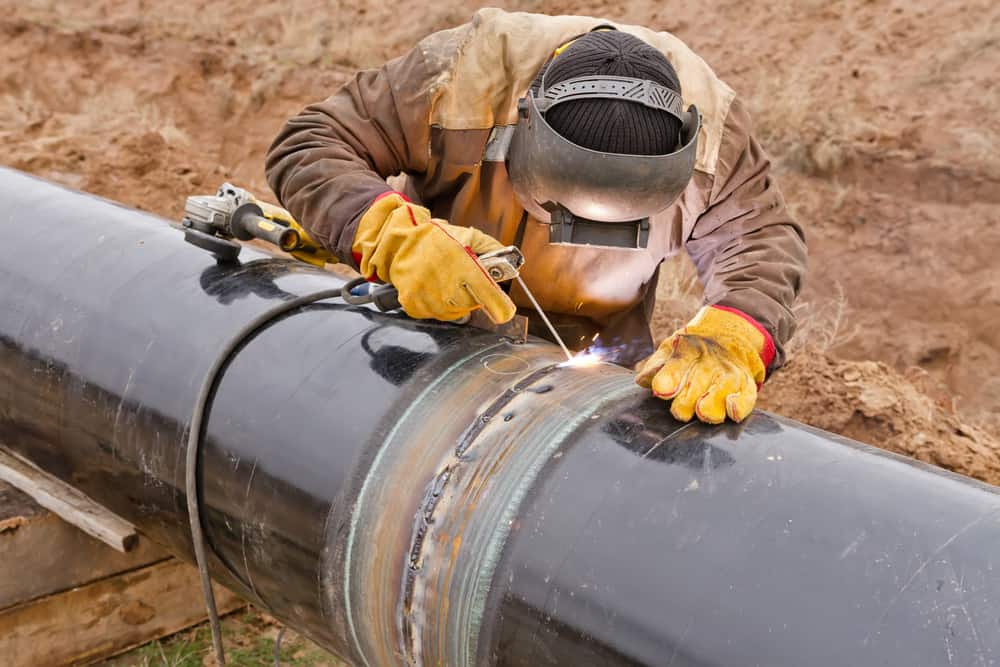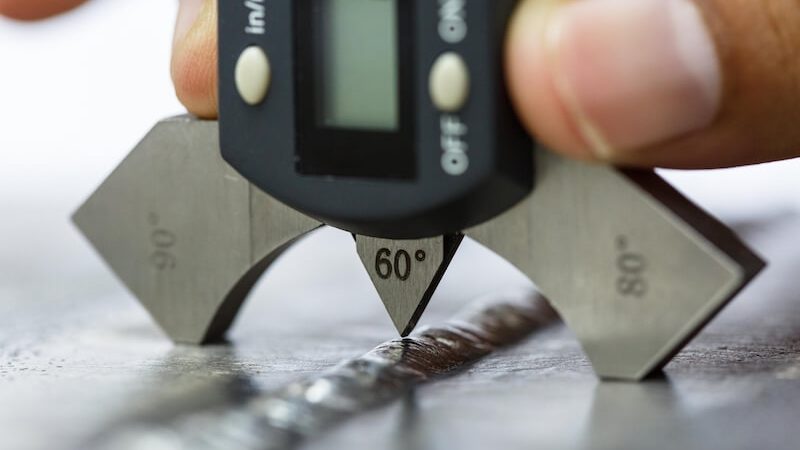Top-Rated Houston Welding Inspection Solutions for Industrial Criteria
Wiki Article
Checking Out the Basics of Welding Examination: A Thorough Evaluation of Procedures, Tools, and the Relevance of Top Quality Control in Welding Industries
Welding assessment offers as a foundation in the maintenance of security and structural integrity across numerous markets. Recognizing the effects of these methods raises important questions regarding their efficiency and the future instructions of high quality guarantee in welding.Significance of Welding Assessment
Welding inspection plays a critical role in guaranteeing the honesty and safety of welded structures. It offers as a methodical method to evaluating weld quality, identifying prospective issues, and making certain compliance with well-known requirements and requirements. The importance of welding examination extends beyond mere adherence to regulations; it is essential in securing human lives and safeguarding financial investments in framework.Faulty welds can result in catastrophic failures, resulting in considerable financial losses, injury, or loss of life. Therefore, strenuous examination procedures are necessary to spot issues such as insufficient penetration, porosity, or splits before they intensify into important failures. Additionally, reliable welding evaluation contributes to the overall efficiency and long life of structures, ensuring that they can hold up against the problems for which they were created.
Furthermore, the implementation of welding assessment fosters a culture of top quality and responsibility within the welding industry. By focusing on examination, organizations show their commitment to quality, consequently boosting their reputation and competition in the industry. Eventually, welding examination is not simply a step-by-step step yet an essential element of engineering integrity and safety assurance, important for the successful implementation of welding projects throughout various industries.
Key Inspection Processes
A detailed approach to welding inspection involves a number of vital processes that are vital for making sure weld quality and structural stability. The very first vital process is visual assessment, which allows assessors to identify surface area defects such as cracks, porosity, and inappropriate bead appearance. This technique offers as a preliminary assessment to make certain that the weld fulfills specified standards.

Furthermore, damaging screening might be carried out on sample welds to examine their mechanical residential or commercial properties and efficiency under anxiety. This process includes effect, tiredness, and tensile screening to verify that the weld can hold up against operational problems.
Lastly, paperwork and reporting are critical parts of the examination process. Keeping accurate documents of evaluations, observations, and examination results aids make certain conformity with sector standards and assists in continual enhancement in welding practices. Collectively, these essential procedures create the foundation of effective welding examination and quality assurance.
Tools for Weld Examination
Countless tools are vital for effective weld evaluation, each developed to assess different elements of weld high quality and efficiency. Among one of the most widely utilized are aesthetic inspection devices, including magnifying glasses and borescopes, which enable examiners to identify surface flaws such as splits, porosity, and improper blend.Additionally, ultrasonic screening (UT) equipment is critical for spotting interior flaws. This tool employs high-frequency acoustic waves to reveal gaps within the weld, guaranteeing the integrity of the product. Radiographic screening (RT) tools, which utilize X-rays or gamma rays, similarly give understanding into the internal framework of welds, enabling the recognition of inclusions or voids.
For precise measurements, calipers and determines play a significant function in figuring out weld measurements and making sure adherence to defined tolerances. Hardness testers evaluate the mechanical buildings of the weld, guaranteeing it fulfills efficiency standards.

Techniques for Analyzing Quality
Just how can the quality of welds be reliably examined? A variety of methods are employed to review weld honesty and make sure adherence to defined requirements. Visual inspection is one of the most essential approach, permitting inspectors to determine surface problems such as cracks, porosity, or undercutting. This non-destructive method works as a preliminary evaluation prior to even more innovative methods are utilized.Ultrasonic testing (UT) is an additional prominent technique that uses high-frequency audio waves to identify interior problems within the weld. Houston Welding Inspection. This method supplies a comprehensive sight of the weld's honesty without jeopardizing its architectural honesty. On top of that, radiographic screening (RT) utilizes X-rays or gamma rays to expose interior problems, providing comprehensive insights right into weld high quality
Magnetic bit testing (MT) is efficient for discovering surface and near-surface interruptions in ferromagnetic materials, utilizing site here magnetic fields and tinted particles to highlight issues. Dye penetrant testing (PT) can be employed to reveal surface-breaking problems by applying a dye that permeates right into cracks and is ultimately exposed.
Conformity With Market Specifications
Compliance with market requirements is critical for making certain the high quality and security of bonded frameworks. These requirements, developed by companies such as the American Welding Culture (AWS) click to investigate and the American National Specification Institute (ANSI), give guidelines that regulate the welding procedure, products, and inspection protocols. Abiding by these standards not just makes certain the architectural integrity of welds however also mitigates dangers linked with failings that can bring about devastating effects.
Welding inspectors are charged with confirming conformity with these standards throughout the welding process (Houston Welding Inspection). This involves examining welding procedures, checking welder credentials, and carrying out complete examinations of the last item. Non-compliance can cause substantial monetary effects, project delays, and damages to a firm's online reputation
In addition, conformity cultivates a society of quality assurance within the company. By developing clear expectations and criteria, business can maintain consistency in their output and improve total productivity. Regular training and updates on criteria are important to maintain employees notified and proficient, ensuring that all facets of welding operations meet or surpass regulatory demands. Eventually, dedication to industry requirements acts as a foundation for excellence in the welding industry, promoting safety and integrity in bonded frameworks.

Verdict
In final thought, welding examination functions as a critical part in preserving the safety and honesty of bonded frameworks. Through the implementation of essential inspection processes and the usage of innovative devices and methods, prospective problems can be identified and addressed effectively. Adherence to sector standards makes sure conformity and advertises a society of high quality within the welding market. Eventually, strenuous examination practices not only protect human lives however additionally boost the sturdiness and performance of bonded buildings.Furthermore, have a peek here the execution of welding examination fosters a society of high quality and liability within the welding industry. Ultimately, welding inspection is not just a procedural action however an essential component of engineering integrity and safety and security guarantee, vital for the effective implementation of welding tasks across different markets.
A comprehensive method to welding assessment entails several key processes that are crucial for making certain weld top quality and structural integrity. These standards, developed by organizations such as the American Welding Culture (AWS) and the American National Standards Institute (ANSI), provide standards that control the welding process, products, and evaluation protocols.Welding inspectors are entrusted with validating compliance with these criteria throughout the welding process.
Report this wiki page